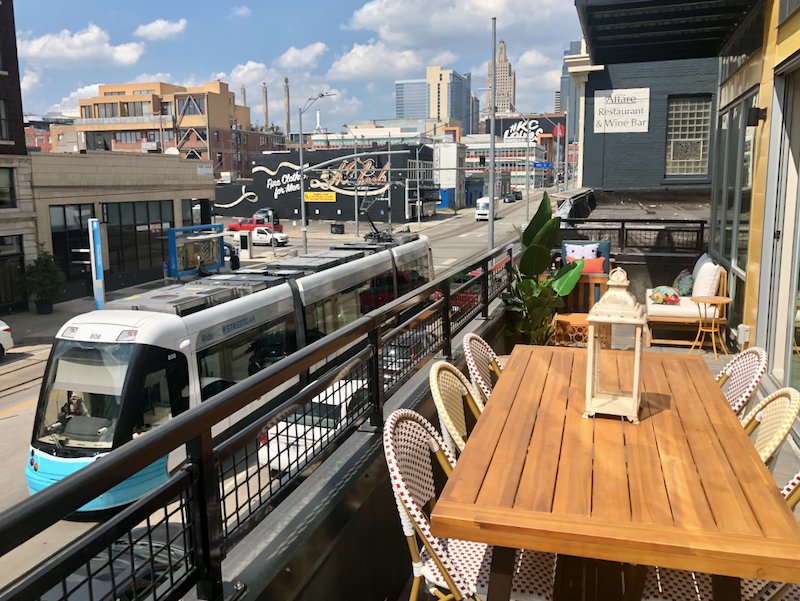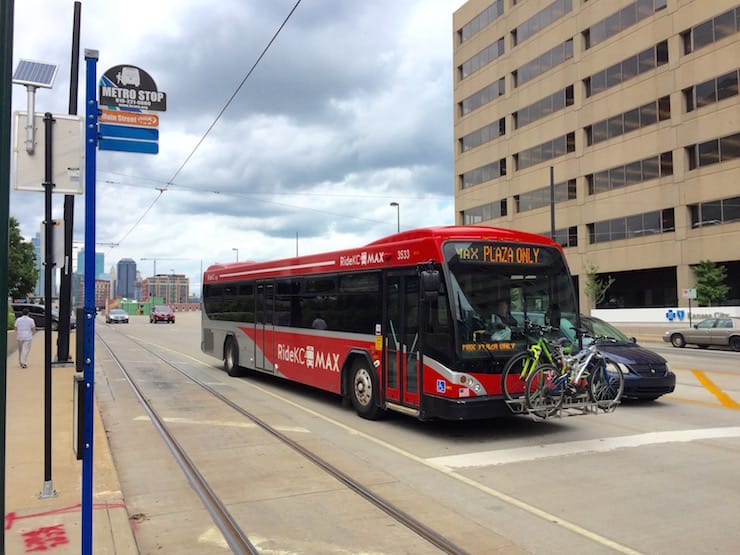Mending Our Broken Heart: Kansas City Trails Peers in Transit Race

Published October 10th, 2022 at 11:30 AM
“Downtown KC: Mending Our Broken Heart,” was a groundbreaking series originally published by The Kansas City Star 20 years ago this month.
It was written by former staffers Jeffrey Spivak, Kevin Collison and Steve Paul, with photographs by Rich Suggs. It was edited by former deputy national editor Keith Chrostowski.
CityScene KC thanks The Kansas City Star and Mike Fannin, its president and editor, for granting permission to republish this report.
While The Star retained the text of “Mending Our Broken Heart,” the original photos and graphics were unavailable. Photos of that missing material from a reprint of the series were used as much as possible.
If you tried to solve our downtown car problem with parking alone, little space would remain for offices, an arena and restaurants.
That’s where transit comes in, particularly in Kansas City.
Seventy percent of Kansas City’s 107,000 downtown employees drive alone to work, according to the Mid-America Regional Council.
Only 16 percent car-pool. Just 8 percent take the bus. Only two of Kansas City’s 16 peer cities, Oklahoma City and Nashville, have a lower share of transit users.
When asked in The Star’s poll if downtown needs more transit, 72 percent said yes.
But those responses haven’t turned into votes. Kansas City has rejected light-rail proposals four times.
So when it comes to transit, Kansas City is not only falling behind its peer cities, it’s barely in the race.
Most of our peer cities are expanding transit options with light rail or a less expensive alternative known as bus rapid transit, or BRT.
Minneapolis is building a light-rail line, and light rail is running in Buffalo, Cleveland, Denver, Pittsburgh, Salt Lake City and St. Louis. Charlotte, Columbus, Louisville and Milwaukee are considering either light rail or a bus rapid transit line.
Bus rapid transit means many things, but every system has a common goal – convincing riders that it’s not just a repackaged bus ride.
That means the vehicle looks different; runs frequently, quickly and on time; and follows an easy-to-understand route.
The Kansas City Area Transportation Authority is now studying BRT.
Warren Erdman, a Kansas City Southern executive who led the most recent effort to build light rail, says, “I think we can get many of the advantages we sought for light rail with bus rapid transit at a fraction of the cost.”
That’s right in line with the thinking of the Federal Transit Administration, which would fund most of the project.

The downtown MAX bus rapid transit route was introduced as one way to speed public transit.
The BRT line under consideration in Kansas City would use an exclusive lane on Main Street, activate traffic signals to speed travel, and serve stations a half-mile apart to avoid frequent stops.
The route would start near the University of Missouri-Kansas City. Once it reaches downtown, it would zigzag past major destinations and end in the River Market.
But such a line is at least three years away. So far, Kansas City is not among the cities picked by the Federal Transit Administration for demonstration projects.
Bus rapid transit would cost an estimated $50 million to $60 million. The ATA has raised $14 million, mostly in federal grants.
“What we’re hoping BRT will do is change the perception of transit,” says Mark Huffer, ATA general manager.
In the meantime, Kansas City voters will face a transit issue on the November ballot – a 10-year, half-cent sales tax increase.
The tax, backed by activist Clay Chastain, would finance $325 million of an estimated $550 million streetcar system stretching from the River Market to the Country Club Plaza area. The plan calls for using Union Station as a transit hub and promoting hiking and biking trails.
City officials oppose the Chastain plan, saying it’s vague and expensive.
Despite the obvious need for transit, options here are still fading away.
Last summer, Coach USA discontinued its open-air trolley. Later this year, the Downtowner, a 25-cent bus shuttle, is expected to shut down.
The Downtowner, which made its debut in 1999, survived on a federal grant. But that expires in November.
One consequence is that the city’s convention and visitors bureau has been forced into the transportation business. To get conventioneers to Crown Center and the Plaza, the bureau arranges for shuttles.
“We do have great things in the city, but they’re hard to get to,” says Stacy Bartlett, director of convention services. “We have to do it to compete with cities with light rail and other transit.”
The shutdown of the Downtowner is a bummer for Kimberly Wilcox. She lives in the River Market and rides the Downtowner to her job at Crown Center.
“I don’t need a car, and this is so much better than other buses that are on a set schedule,” she says. “It helps people get to wherever they’re going a lot quicker.”


